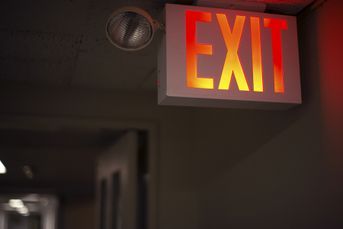Are HFT and computers to blame for the market’s quick drop?
The Dow's 1,100-point drop off the opening bell Monday cost investors untold amounts of money and suggests the market is still broken.
Well that was certainly fun on Monday! Stocks, as measured by the Dow Jones Industrial Average, crashed 1,100 points at the open, rallied 800 points and then fell almost 300 points to close down 588 points. Given yesterday’s full Street$marts edition and the two blog posts I did here, I am sure most people were expecting a market update. After all, I did offer 3 scenarios for Monday’s trading and the market did end up following scenario No. 1 the most. I will get to the market in a subsequent post. Of note, almost every single interview I saw and comment I read called for “staying the course” or not selling. I guess those were the same folks who told investors that all was well over the previous few months as the major indexes peaked. Hmmm …
(More: Investors react to news of 1,000-point fall)
It’s not a topic I often mention, but from my seat, the system was clearly broken in the first half hour and the computers ran amok. It was beyond embarrassing and ridiculous, AGAIN. Just like we saw in May 2010, this was a second Flash Crash. NYSE and Nasdaq? Goldman Sachs, Citadel, Merrill Lynch and Virtu? You can hear crickets from the cats who ate the canary.
POSITIONED FOR THE CORRECTION
As someone who had forecast and was positioned for the correction, I was chomping at the bit to deploy some cash. Without any widespread firsthand knowledge, I believe that high-frequency trading was responsible, not for the whole stock market decline, but for the quick acceleration and pricing dislocations or anomalies. Remember, HFT thrives when markets are volatile and liquid. Not so much in quiet and less volatile markets.
What I did see firsthand was enough small orders of less than 100 shares early in the day to make me believe that the computers were out of control, as one of the footprints of HFT is odd lot trading or orders less than 100 shares. Let’s add in the outrageous pricing in the opening few minutes that went away quickly enough that I couldn’t even finish getting my orders in the queue to execute. A little sour grapes perhaps? Absolutely, but there was also something very wrong with our markets.
(More: Robo-advisers face first reckoning in downturn)
As the day began and I was glued to my screen, I noticed that XLV, a health care exchange-traded fund was in free fall, showing an opening loss of 6% that almost immediately became 20%. These are not high flying micro-cap technology stocks that don’t trade volume. These are the most liquid stocks in the health care field. Johnson & Johnson and Pfizer account for almost 18% of the ETF. Memories of May 2010 and the Flash Crash immediately came to mind. I quickly checked IBB, a biotech ETF, and saw similar but not as dramatic weakness. That was clue No. 2, as biotech is almost always more volatile than XLV and should have been down more.
https://www.investmentnews.com/wp-content/uploads/assets/graphics src=”/wp-content/uploads2015/12/CI101066825.JPG”
You can see what I am talking about in the chart above. XLV opened down 6% and quickly collapsed to down 26% at the bottom of the green candle right after the tall red one. Minutes later, XLV was trading at $69 or 20% higher. That’s not only abnormal, but shows a system not functioning like it was supposed to. And during this brief period as you can see above, volume was enormous, another hallmark of HFT.
ASTOUNDING PRICE DISLOCATIONS
I started looking at random large cap individual stocks both in and outside the health care sector and saw some truly astounding pricing dislocations in my opinion. Again, these stocks should not have fallen 20% in a matter of a few minutes. None had company specific bad news. GE, JP Morgan, CVS, McKesson and Verizon to name a few. I have not done a lot more research since then because I don’t think it’s worth the effort at this point, but I know from speaking with colleagues and peers that it was widespread in the ETF space. Just look at VHT, also in the health care space, below.
https://s32566.pcdn.co/wp-content/uploads/assets/graphics src=”/wp-content/uploads2015/12/CI101067825.JPG”
I am not big crier of injustice and “demander” of government intervention to fix our problems, so you won’t find me flooding the Securities and Exchange Commission with calls and emails or creating a grassroots campaign to do so. I won’t be surprised, however, if the SEC does open a formal inquiry into Monday’s opening of trading as another Flash Crash did occur. While my clients may have lost an opportunity, there were thousands of investors who were likely stopped out of their positions when they should not have been, costing them untold amounts of money.
Paul Schatz is president of Heritage Capital.
Learn more about reprints and licensing for this article.






